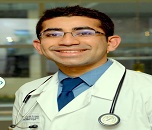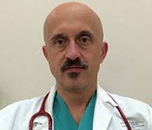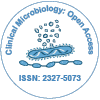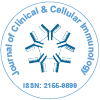Theme: A Journey To The Diverse Microbial Environs
Microbiologists 2016
On behalf of the Organizing Committee, I am really pleased to announce the 3rd Global Microbiologists Annual Meeting to be held in Portland, USA from Aug 15-17, 2016, organized by OMICS International.
3rd Global Microbiologists Annual Meeting is one of the most important microbiology conferences that bring together clinicians, researchers, and other industry professionals. The scientific program will range from “the world of microbes” throughout “the science of food”, to clinical, industrial, and environmental microbiology. This will allow reflecting on the microbiology at 360 degrees, all-round by expanding the knowledge of everyone.
3rd Global Microbiologists Annual Meeting will give you the opportunity to meet the main experts around the world, present your own discovery or work, and interact with your peers. Furthermore, the stimulating scientific program will provide you to enrich professionally and socially, providing the chance to keep in touch with other participants for establishing any new future collaborations.
Portland is the largest city of Oregon. In Oregon we can appreciate nature in all its glory, from forests to mountains, from lakes to ocean. Portland is different from other American cities. Few skyscrapers, high sustainability, low energy consumption and respect for the environment have contributed over the years to make it one of the most livable cities in the US.
We look forward to meeting you in August 2016, in Portland.
Marco Manfredi, MD, PhD,
"Pietro Barilla" Children's Hospital, Italy
We organize 1000+ Global Events inclusive of 300+ Conferences, 500+ Workshops and 200+ Symposiums on various topics of Science & Technology across the globe with support from 1000 more scientific societies and Publishes 500+ Open Access journals which contains over 50000 eminent personalities, reputed scientists as editorial board members.
The organization feels proud and honoured in inviting the contributors across the globe to its premier "3rd Global Microbiologists Annual Meeting" to be held during August 15-17, 2016 at Portland, Oregon, USA.
This year's meeting will showcase the role of microbes in different ecosystems by relating them with the revolutionary science in diverse areas of microbiology through a wide range of scientific sessions. The meeting is all set to be graced by world-renowned speakers who will illuminate modernized microbiology techniques and updates. All those who are either starting your career or an old-time microbiologist can attend this conference to learn, hook-up and get galvanized. We are looking forward to welcome you all in Portland.
Scope and Importance:
Microbiology has become increasingly important to human society. It has emerged as one of the most important branches of life sciences. As microbes practically affect all activities of our life like, food, clothing, shelter, health hygiene etc., microbiology has made vast progressive strides in all these fields in little less than a century to improve the quality of our life. Infectious diseases have almost been conquered by new drugs, quality of agricultural crops improved by using techniques of genetic engineering, new varieties of wines, liquors have been produced- all these are possible only because of microbiology. All these will make us wonder how our life would have been without the knowledge of microbiology.
We organize 1000+ Global Events inclusive of 300+ Conferences, 500+ Workshops and 200+ Symposiums on various topics of Science & Technology across the globe with support from 1000 more scientific societies and Publishes 500+ Open Access journals which contains over 50000 eminent personalities, reputed scientists as editorial board members.
3rd Global Microbiologists Annual Meeting will be held at Portland, Oregon from August 15-17, 2016. This year's conference will showcase the role of microbes in different ecosystems by relating them with the revolutionary science in diverse areas of microbiology through a wide range of scientific sessions. The following conference tracks help frame the structure of Microbiologists 2016. The intent of the tracks is to help attendees organize presentations they wish to attend in a meaningful way.
Track 1: Infectious Diseases
Medical microbiology deals with the body's response to invading microorganisms. Bacteriology, virology, mycology, parasitology, the major subfields of microbiology are first covered with the general concepts of cytology and physiology of different microbes and then with major pathogens of humans. Stress on the mechanisms of infection characteristic of that type of microorganism, provide the audience with a framework for understanding rather than memorizing the clinical behaviour of the pathogens. The concepts and emerging trends in pathogenesis of microbes and their virulence mechanisms, their genetic background provide a deep insight into the understanding of disease establishment and progression. Recent research on nematodes and protozoans will contribute in making advancements in the emerging studies. Knowledge on parasites, diversified roles and their interactions with the host will bring awareness on the importance and existence of extremely minute organisms. The next section comprises of introduction to the Polymicrobial diseases and the tropical diseases, arranged by organ system and provides transition for clinical considerations. Microbial generations are smarter enough to bring about a change in their resistance patterns, thereby paving a way for development of newer strategies and emerging trends in combating the microbial infections. There has been an enormous modification in the diagnostic methods and tools starting from the basic nucleic acid probing to circulating biomarker studies.
The global market for infectious disease treatments was valued at $90.4 billion in 2009. This market is expected to increase at a compound annual growth rate (CAGR) of 8.8% to reach $138 billion in 2014.
Related Microbiology Conferences | Microbiology Events
3rd International Conference on HIV/AIDS, STD's and STI's, Atlanta, USA, International Conference on Pediatric Infectious Disease, Philadelphia, USA, 2nd, World Congress on Infectious Diseases, Philadelphia, USA, 4th International Congress on Bacteriology and Infectious Diseases, San Antonio, USA, Mycology 2016, San Antonio, USA, Tropical Infectious Diseases in Texas, USA, Animal microbe symbioses in USA, Infectious diseases summit in USA, Microbiota in Inflammation and cancer in Cyprus, Congress on AIDS in Dhaka, Bangladesh, Microbiology Society, International Union of Microbiological Societies, American Society for Microbiology USA, Federation of European Microbiological Societies European Union, and The Royal Society of Pathologists UK.
Track 2: Plant, Soil and microbial sciences
Plant and soil microbiology provides a comprehensive source of information on DNA sequencing and mapping. It also describes how transgene expression is controlled in plants and how advanced information strategies can be used to manipulate and modify the plant genome. Most plants strongly rely on the co-existence with microorganisms. Thereby, both groups benefit from these symbioses. It has been shown and reported that a large number of specific genes in plants and microorganisms are specifically activated during these interactions. Of course, microbes also act as pathogens. Interactions between plants and microorganisms are often located on plant surfaces, such as leaf cuticles, seeds and on roots. The tract discusses the signalling within a symbiosis or the molecular differences between symbiotic and pathogenic microorganisms, the role of microbes in plant growth and development or in plant protection against deleterious agents and the interactions of microbes with genetically modified plants. The analysis of bacterial communities in the rhizosphere; microbial population genetics; various aspects of mycorrhizal symbiosis; functional genomic approaches and the use of microorganisms as bio-indicator of soil disturbance, modulations of soil ecosystems, and soil fertility would prove to be an exciting tract. An overview of all the applications of plant transformation in agriculture, medicine and industry will prove beneficial.
The global market for agricultural microbiology reached $26.4 billion in 2013 and $27.8 billion in 2014. This indication is expected to reach $46.8 billion in 2019, registering a compound annual growth rate (CAGR) of 11.0% over the next five years.
Related Microbiology Conferences | Microbiology Events
4th International Conference on Plant Genomics, Brisbane, Australia, Global Summit on Plant Science, San Antonio, USA, 5th International Conference on Agriculture and Horticulture, Cape town, South Africa, Host Microbiome interactions in Pultusk, Poland, Ecology of Soil Microorganisms in Prague, Czech Republic, Soil Biodiversity conference in Dijon, France, Microbial biodiversity in Perugia, Italy, Plant genome evolution in Amsterdam, Netherlands, Plant genetics and breeding in Vienna, Austria, Plant-Microbe interactions in Portland, USA, Microbiology Society , International Union of Microbiological Societies , American Society for Microbiology USA, Federation of European Microbiological Societies European Union, and Japanese Society for Bacteriology
Track 3: The Science of Food
Food Microbiology focuses on microbes having both beneficial and deleterious effects on the safety and quality of foods, thereby becoming a public concern. Food science includes microbial interactions with various foods and food chain environments including their adaptation and response mechanisms to food processing and handling stresses. Both microbial versatility and diversity can be exploited biotechnologically and industrially for the improvement of quality, safety and healthy processes of processed foods. An in-depth exploration of microbiology of fermented foods will prove commercially beneficial. Equally important is the fact that milk is an excellent source of nutrients for humans, and yet these same nutrients provide a most suitable medium for microbial growth and metabolism. Nutrigenomics focusses on identifying and understanding molecular-level interaction between nutrients and other dietary bioactives with the genome. Over the past few years, sequencing the entire genome of a single cell, a way to connect 16S genes to other functions encoded on the same strand of DNA, has become a viable option. Genomics and functional genomics of pathogenic and value adding technological microbes, molecular methods for the identification, typing and characterization of microbes and complex microbial communities, evolutionary dynamics of food-borne pathogenic microorganisms will be great use. Development of probiotics, prebiotics and synbiotics as food supplements and their effects on human health including effects on host gut microbiota. Advancements of predictive microbiology and its application to food and process optimization and risk assessment are emerging.
Food microbiology labs are expected to gain revenues more than $120 billion by the end of 2020. The market for food safety testing is projected to reach a value of USD 16.1 Billion by 2020, at a CAGR of 7.4% from 2015. In the past 5 years, food contract labs have shown CAGR that exceeds overall growth in the food safety testing market.
Related Microbiology Conferences | Microbiology Events
7th Indo-Global Summit and Expo on Food & Beverages, New Delhi, India, 4th International Conference and Exhibition on Food Processing & Technology, London, UK, 4th International Conference and Exhibition on Probiotics & Functional Foods, Valencia, Spain, 4th International Conference and Exhibition on Nutrition & Food Sciences, Chicago, USA, International Conference on Food Safety and Regulatory Measures, Birmingham, UK, International Scientific Conference on Probiotics and Prebiotics, Budapest, Hungary, UK Probiotics Conference in London, UK, Beneficial microbes in USA, Individual microbe in USA, Conference on Food Microbiology in Belgium, Food micro in Dublin, Ireland, Food packaging, shelf life and food safety in Erding, Germany, Dairy conference in Papendal, Netherlands, Microbiology Society , International Union of Microbiological Societies , American Society for Microbiology USA, Federation of European Microbiological Societies European Union
Track 4: Aqua Microbiology
An ecological approach is organized by habitat, from freshwater and salt water to extreme and anthropogenic systems. It offers new insights into the differing rates of microbes in various aquatic habitats, their relative abundance and growth rates, and their contribution to the biochemical cycling of elements. Freshwater and marine ecosystems provide an array of critical ecosystem services such as participating in various biogeochemical cycles and nutrient exchange, providing natural protection and habitat, degrading and dispersing many environmental pollutants. Concentrating on the interactions between micro-vertebrates and micro-invertebrates, the track gives a wide biological appeal. Waterborne infections are caused by recreational or drinking water contaminated by disease causing microbes or pathogens. Application of commercial blends of microbes, microbial enzymes and immobilized cells in waste water treatment help in removal of metals and metal pollutants. Water recycling is used for beneficial purposes such as agricultural, irrigation purposes, industrial processes, and replenishing a ground water basin. Wastewater treatment can be employed to meet the water quality requirements of a planned reuse. Apart from this, fewer microbes can also be used as bioindicators. Biological indicators may be defined as particular species or communities, which, by their presence, provide information on the surrounding physical or chemical environment at a particular site. Information about the water quality by algae can be provided either in the form of long-term formation or short-term formation.
Global markets for wastewater-recycling and reuse technologies during the period from 2009 to 2012 increased from nearly $6.7 billion to $9.5 billion, equivalent to a compound annual growth rate (CAGR) of 12.6%. Global markets are expected to increase from $9.5 billion in 2012 to $23.4 billion in 2017, reflecting a five-year CAGR of 19.7%.
Related Microbiology Conferences | Microbiology Events
International Conference on Water Microbiology and Novel Techniques, Chicago, USA, 4thInternational Conference on Oceanography and Marine Biology, Brisbane, Australia, 2nd World Congress on Beneficial micobes: Food, Pharma, Aqua and Beverages industry, Phoenix, USA. Emerging issues in Water Microbiology in UK, Diversity of Marine Microbes in Dichato, Chile, Aquatech in Amsterdam, Netherlands, Water expo in Florida, USA, WaterPro conference in Oklahoma, USA, European waste water management conference in England, UK, WEFTEC in Chicago, USA, Aquatic products processing and health in Semarang, Indonesia, Max Planck Institute for Marine Microbiology, Society for Conservation Biology,Microbiology Society , International Union of Microbiological Societies , Federation of European Microbiological Societies, Scottish Association for Marine Science
Track 5: Industrial microbiology: An essential microbiology
Industrial microbiology is also termed as microbial biotechnology. It employs application of scientific and engineering principles to process the materials by microorganisms or plant and animal cells to create useful products and processes. The microbes utilized may be natural isolates, selected mutants from the laboratories or microbes that are genetically engineered using recombinant DNA technologies. Areas under industrial microbiology include quality assurance for the food, pharmaceutical, and chemical industries. Industrial microbiology may also be responsible for contamination of air and plants, destroying the animal health used in testing products, and discovery of newer pathways and microbes. Industrial microbiology has proved beneficial for the discovery, development, or implementation of certain processes like antibiotics, antimicrobials, vaccines, health-care products foods and beverages food flavouring agents, preservatives, enzymes, carbohydrates. It is also involved in checking the quality of resultant products. Other uses of industrial microbiology include recovery of oil or mining, contamination control, degrade or transform pollutants and also in waste water management. This may lead to the discovery or engineering of microbes to solve contamination and recycling issues and thereby assess the environmental safety of new products.
The industrial microbiology market is large and growing, the second largest diagnostics market after clinical diagnostics in test volume and market value. More than 90,000 industrial plants worldwide conduct close to 2 billion tests each year, which represents a market value of $6.5 billion. Because the demand for consumer products is growing as the world’s population grows, increases in product quality and safety testing appear to continue undaunted by current worldwide economic problems.
Related Microbiology Conferences | Microbiology Events
International Conference and Expo on Industrial Microbiology, Frankfurt, Germany, 2nd World Congress and Expo on Applied Microbiology, Istanbul, Turkey, 13th Asia-Pacific Global Summit and Expo on Vaccines and Vaccination, Melbourne, Australia, International Conference on Travel Medicine and Vacciines, San Francisco, USA, 2nd World Congress on Beneficial micobes: Food, Pharma, Aqua and Beverages industry, Phoenix, USA, MICROSCON in Olten, Switzerland, Pharmaceutical microbiology in Kuala Lumpur, Malaysia, Antimicrobial congress in Washington, USA, Infections and antibiotics in Umea, Sweden, Antimicrobials and antimicrobial resistance in Sibenik, Croatia, Society for Industrial Microbiology and Biotechnology,International Union of Microbiological Societies , American Society for Microbiology USA, Federation of European Microbiological Societies European Union
Track 6: Genetics and Immunology of microbes
Microbial genetics is concerned with the transmission of hereditary characters in microorganisms. It plays a unique role in developing the fields of molecular and cell biology. It has also found applications in medical, agricultural, food and pharmaceutical industries. Microbes are ideally suited for combined biochemical and genetic studies, and proved to be successful in providing information on genetic codes and gene regulations. After the discovery of DNA transfer, bacteria were of great interest because of their higher rate of reproduction and mutation than other larger organisms. Conjugation, transformation, and transduction are the important methods for mapping the genes on bacterial chromosomes. Recombinant DNA technology, selection, mutation, reproductive cloning, and use of plasmids form a part of genetic engineering tools. Metagenomics is the study of genetic material derived from environmental samples. Microbial genomics can be used to create new biofuels. Pathogenicity islands are discrete genetic loci that encode more virulent factors. Immunology is the study of protection from invading organisms like viruses, bacteria, protozoa, parasites and our responses to them. The commensal microbiota plays a significant role in modulating the outcome of immune responses in the host body keeping immune homeostasis in health. The barrier tissue such as the skin stops the entry of organism into our bodies. However, if the organisms penetrate through the skin, then macrophages and neutrophils kill them without the need for antibodies. Immediate challenge comes from soluble molecules that deprive the invading organism of essential nutrients and from certain molecules that are found on the surfaces of epithelia, in secretions and in the blood stream. A second line of defence is the adaptive immune system which takes days to respond to a primary invasion. Here, we see the production of antibodies and the cells involved include B-cells and T-cells. Development of autoimmune diseases is a multi-factorial process. Triggers from environmental and genetic factors as well as pathogenic pathways might explain the causes and outcomes of diseases in humans.
The market for immunobiologicals was valued at $150 billion in 2011 and should reach $163 billion in 2012. Total market value is expected to reach $252 billion in 2017 after increasing at a five-year compound annual growth rate of 9%. The global market for DNA sequencing products and services was valued at $3.5 billion in 2012 and was estimated at nearly $4.5 billion for 2013. BCC Research expects the market to grow to nearly $11.7 billion by 2018, and register a five-year compound annual growth rate of 21.2% from 2013 to 2018.
Related Microbiology Conferences | Microbiology Events
International Conference on Microbial Physiology and Genomics, Rome, Italy, 5th International Conference on Clinical Microbiology and Microbial Genomics, Philadelphia, USA, International Conference on Clinical and Molecular Genetics, Chicago, USA, World Congress on Human Genetics, Valencia, Spain, Global Veterinary Microbiology summit and expo, Chicago, USA, Bacterial Genetics in Italy, Streptococcal genetics in USA, Molecular genetics of Bacteria and Phages in Madison, Wisconsin, Molecular Genetics and Microbiology in London, UK, Evolutionary Genomics in Biddeford, Maine. International Conference on Autoimmunity, Manchester, UK, 2nd International Conference and Exhibition on Antibodies, Philadelphia, USA, International Conference on Histocompatibility and Immunogenetics, San Antonio, USA, Immunotherapy in Brisbane, Australia, Immunology, microbiology and infectious diseases in Wyoming, USA, Immunology of fungal infections in Texas, USA, Innate immunity in host-pathogen interactions in Heidelberg, Germany, Human immunity and Microbiome in Montreal, Canada, International Congress of Immunology in Melbourne, Australia, American Society for Biochemistry and Molecular Microbiology, Swiss Society for Microbiology, Microbiology Society , International Union of Microbiological Societies , American Society for Microbiology USA, Federation of European Microbiological Societies European Union
Track 7: Biofilms
Microorganisms attach to surfaces and develop biofilms. Biofilm-associated cells can be differentiated from their suspended counterparts by generation of an extracellular polymeric substance (EPS) matrix, reduced growth rates, and the up- and down- regulation of specific genes. Attachment is a complex process regulated by diverse characteristics of the growth medium, substratum, and cell surface. An established biofilm structure comprises microbial cells and EPS, has a defined architecture, and provides an optimal environment for the exchange of genetic material between cells. Cells may also communicate via quorum sensing, which may in turn affect biofilm processes such as detachment. Biofilms have great importance for public health because of their role in certain infectious diseases and importance in a variety of device-related infections. A greater understanding of biofilm processes should lead to novel, effective control strategies for biofilm control and a resulting improvement in patient management.
The global market for nanoengineered surfaces of biofilms was estimated to total $183 million in 2012 and is projected to increase to $622 million in 2017; the market should total $799.3 million by 2018 and nearly $2.5 billion by 2022, and have a five-year compound annual growth rate (CAGR) for of 27.7% from 2012 to 2017.
Related Microbiology Conferences | Microbiology Events
Euro Global Summit and Expo on Biomass, Birmingham, UK, Annual Conference on Bioscience, Berlin, Germany, 2nd International Congress and Expo on Biofuels and Bioenergy, Sao Paulo, Brazil, Global Summit and Expo on Biomass, Dubai, UAE, Microbial interfaces in Ireland, Quorum sensing inhibition in Spain, Biofilms in Chicago, USA, Symposium on Bacterial Networks in Spain, Biofilms Expo in Porto, Portugal, 10th Euro Global Summit and Expo on Vaccines and Vaccination, Rome , Italy, Microbiology Society, International Union of Microbiological Societies, American Society for Microbiology USA, Federation of European Microbiological Societies European Union, and The Royal Society of Pathologists UK.
Track 8: Applied Microbiology
Microorganisms have been used as sources of antibiotics, vitamins and enzymes and for the production of fermented foods and chemicals since many decades. In the current century, microorganisms are and will play a vital role in addressing some of the problems faced by mankind. Microbes have a significant role to play in the discovery of antibiotics, microbial vaccines, immune system modulating agents, disinfectants, anti-microbial coatings, manufacturing of biofuels and bioplastics, using biotransformation for the production of fine chemicals and many other therapeutic agents. Hence, microbes have proved beneficial for the survival of mankind.
Global revenue for microbial products like vaccine technologies, antibiotics and antimicrobial agents was nearly $31.8 billion in 2011. This market is expected to increase from $33.6 billion in 2012 to $43.4 billion in 2017 at a compound annual growth rate (CAGR) of 5.3%.
Related Microbiology Conferences | Microbiology Events
2nd International Conference on Antimicrobial Agents and Chemotherapy, Dallas, USA, 2nd World Congress and Exhibition on Antibiotics, Las Vegas, USA, Children Vaccines, Rome, Italy, Mycotoxins and Phycotoxins in USA, Antibiotics in Spain, Pharmaceutical Microbiology in Bethesda, USA, Development of Antibacterial agents, Washington, USA, Antimicrobial Peptides, Lucca, Italy, Vaccines in Seoul, South Korea, Conference on Nano medicine in Kathmandu, Nepal, World Vaccine strategy congress, Washington, USA, Microbiology Society , International Union of Microbiological Societies , American Society for Microbiology USA, Federation of European Microbiological Societies European Union, Society for Applied Microbiology
Track 9: Environmental Microbiology
Environmental microbiology is about the composition and physiology of microbial communities in the environment. The environment in this case includes soil, water, air, sediments, animals and plants. It also includes artificial environments like Bioreactors. Molecular biology has revolutionized the study of microorganisms in the environment and improved our understanding of the composition, phylogeny, and physiology of microbial communities. The present molecular technologies include DNA-based technologies and new methods for RNA and protein studies from environment samples. Currently there is a major emphasis on the application of "omics" approaches to determine the identities and functions of microbes inhabiting different environments. Microbial life is amazingly diverse and microorganisms literally cover the planet. Microorganisms can survive in some of the most extreme environments on the planet and some can survive high temperatures, often above 100°C, as found in geysers, black smokers, and oil wells. Some are found in very cold habitats and others in highly salt|saline, acidic, or alkaline water. Microbes play a crucial role in oil biodegradation, degradation of aromatic compounds and analysis of waste biotreatment.
The global market for environmental remediation technologies was valued at about $59.5 billion in 2013. The total market is expected to expand from nearly $61.7 billion in 2014 to $80.5 billion in 2019, with a compound annual growth rate (CAGR) of 5.5% from 2014 through 2019.
Related Microbiology Conferences | Microbiology Events
Microbiology and Environmental Microbiology Conference, Frankfurt, Germany, International Conference on Environmental Toxicology and Ecological Risk Assessment, Sao Paulo, Brazil, International Conference on Pollution Control and Sustainable Environmnet, Dubai, UAE, International Conference on Environmental Health and Safety, Valencia, Spain, Applied and Environmental Microbiology in South Hadley, Massachusetts, Environmental Microbiology in Barcelona, Spain, Environmental Technology Forum, Johannesburg, Africa, EUCARPIA in Antalya, Turkey, Enviromine in Lima, Peru, CleanEnviro Summit in Singapore, Microbiology Society International Union of Microbiological Societies , American Society for Microbiology USA, Federation of European Microbiological Societies European Union.
Track 10: Clinical Microbiology and Infection
Clinical microbiology as a branch of science deals with the interrelation of macro- and microorganisms under normal and pathological conditions. It provides comprehensive information on the identification of different microorganisms and outlines recent vicissitudes in taxonomy. Microbial profiling is the relegation of microbes predicated on experiments, resulting expeditious identification. This system is developed for expeditious identification of clinically germane organisms and hence only kenned microbes can be identified. The predominant proteomic technologies that have been explored for microbial identification and characterization include matrix-availed laser desorption/ionization time-of-flight mass spectrometry (MALDI-TOF-MS); electro spray ionization mass spectrometry (ESI-MS); surface-enhanced laser desorption/ionization (SELDI) mass spectrometry; one- or two-dimensional sodium dodecyl sulphate–polyacrylamide gel electrophoresis (SDS-PAGE); or the coalescence of mass spectrometry, gel electrophoresis, and bioinformatics. In the context of plants, two symbiotic systems have been actively studied for many years. One is arbuscular mycorrhizal (AM) symbiosis and the other is root nodule (RN) symbiosis. Oral bacteria have evolved mechanisms to sense their environment and eschew or modify the host.
The global clinical microbiology market is expected to reach $12,411.36 million in 2019 from $6,727.29 million in 2014, at a CAGR of 13.03% between 2014 and 2019.
Related Microbiology Conferences | Microbiology Events
5th International Conference on Clinical Microbiology and Microbial Genomics, Philadelphia, USA, International Conference on Clinical and Molecular Genetics, Chicago, USA, 7th International Conference on Biomarkers and Clinical Research, Baltimore, USA, 2nd International Meeting on Clinical Case Reports, Dubai, UAE, 2nd International Conference on Clinical Trials, Philadelphia, USA, Clinical applications of Molecular Pathology in Michigan, USA, Asia-Pacific congress of Clinical Microbiology in Victoria, Australia, Clinical Immunology and Infectious Diseases in Wyoming, USA, Clinical Outsourcing Strategies in Frankfurt, Germany, Clinical Impacts of Animal Nutrition and Feeding in Budapest, Hungary, Microbiology Society , International Union of Microbiological Societies , American Society for Microbiology USA, Federation of European Microbiological Societies European Union, and The Royal Society of Pathologists UK.
Track 11: Geomicrobiology and Predictive Microbiology
The field of Geomicrobiology is concerned with the role of microbe and microbial processes in geological and geochemical processes. This field is especially important when dealing with microorganisms in aquifers and public drinking water supplies. It includes organisms that are considered extremophiles. Extremophiles are microorganisms that live in areas considered too hostile for most. An example of an extremophile is anaerobic sulphate reducing bacteria, which lives in hyper-saline lagoons in Brazil and Australia. It is believed these bacteria may be responsible for the formation of dolmitea. A good example of a geomicrobe is Pseudomonas putidia. Geomicrobiological processes are relevant in many natural environments including aquifers, geological and geochemical processes, extreme environments like acidic, extreme temperatures and saline conditions and in metal ion reduction. Some of the most important processes include Weathering, Precipitation of carbonates and phosphates, Ocean crust support, Nuclear waste disposal and hot springs. Predictive microbiology includes responses of microorganism's to particular environmental conditions such as temperature, pH and water activity. It utilises mathematical models and computer software to graphically describe these responses. These models do not replace laboratory analysis or the training and judgment of an experienced food microbiologist. Predictive microbiological models must be used with great caution and only used by trained, experienced personnel with an understanding of the limitations of use. In all these, a prediction must only be used as a guide to the response of microorganism(s) to a particular set of environmental conditions. Food businesses should never rely solely on any predictive microbiological model to determine the safety of foods and/or processing systems. Predictive microbiological models are normally developed assuming that microbial responses are consistent. While predictive models can provide a cost effective means to minimise microbiological testing in determining shelf-life. Initiatives to develop microbiological modelling programs have been ongoing in the United States, the United Kingdom, Denmark, France, Australia and other countries for a number of years. These programs have resulted in the development of a wide range of microbiological modelling software packages becoming available on the internet for download.
U.S. sales of geomicrobiology products was valued at $241.2 million in 2012. This is expected to increase at a total compound annual growth rate (CAGR) of 7.9%, with 2013 sales of $261.9 million, rising to $382.3 million in 2018. The global market for predictive microbiology equipments like sequencing products, proteomics equipments and services was valued at $3.5 billion in 2012 and was estimated at nearly $4.5 billion for 2013. BCC Research expects the market to grow to nearly $11.7 billion by 2018, and register a five-year compound annual growth rate of 21.2% from 2013 to 2018.
Related Microbiology Conferences | Microbiology Events
9th Nano Congress for Future Generations, Valencia, Spain, Petroleum Geology, USA, 4th Global Summit on Geosciences, Atlanta, USA, World Congress on Petroleum and Refinery, Brisbane, Australia, 11th International Conference and Expo on Nanoscience and Molecular Nanotechnology, London, UK, Geomicrobiology Network and Environmental Mineralogy in Leeds, UK, Bio Micro World conference in Barcelona, Spain, Frontiers in Geomicrobiology in Munich, Germany, Diverse perspectives on Geomicrobiology in Morocco, Nanotechnology and Materials Science in Dubai, UAE. 4th International Conference on Predictive, Preventive and Personalized Medicine and Molecular Diagnostics, Phoenix, USA, 7th International Conference and Expo on Proteomics, Rome, Italy, 6th International Conference and Expo on Metabolomics, Chicago, USA, 5th International Conference on Computational Systems Biology, Philadelphia, USA, , 7th International Conference on Bioinformatics, Chicago, USA, 9th International Conference on Predictive Modelling in Food, Rio de Janeiro, Brazil, 18th Conference in Genomics and Proteomics of Human Pathogens, London, UK, Applied bioinformatics and Public Health Microbiology, Cambridge, UK, 7th Annual NGS Congress, London, UK, Microbiology Society , International Union of Microbiological Societies , American Society for Microbiology USA, Federation of European Microbiological Societies European Union, and The Royal Society of Pathologists UK.
Track 12: Diagnostic Microbiology: Traditional and Modern Methods
Diagnostic medical microbiology is concerned with the etiologic diagnosis of infection. Diagnostic microbiology encompasses the characterization of thousands of agents that cause or are associated with infectious diseases. The techniques used to characterize infectious agents vary greatly depending on the clinical syndrome and the type of agent being considered, be it virus, bacterium, fungus, or parasite. Because no single test will permit isolation or characterization of all potential pathogens, clinical information is much more important for diagnostic microbiology than it is for clinical chemistry or hematology. Many pathogenic microorganisms grow slowly, and days or even weeks may elapse before they are isolated and identified. Treatment cannot be deferred until this process is complete. After obtaining the proper specimens and informing the laboratory of the tentative clinical diagnosis, the clinician should begin treatment with drugs aimed at the organism thought to be responsible for the patient's illness. There are many diagnostic procedures to identify the causative organism ranging from the evergreen nucleic acid probing amplification tests, Ag-Ab tests, Cytometry tests to biosensors and biotection. From the past few years, NGS, digital PCR and proteomic based tests have emerged and are gaining successful results in diagnosis.
Related Microbiology Conferences | Microbiology Events
2nd International Conference and Exhibition on Molecular Medicine and Diagnostics, Miami, USA, International Conference on Medical Imaging and Diagnosis, Chicago, USA, 7th International Conference on Biomarkers and Clinical Research, Baltimore, USA, International Conference and Exhibition on Nanomedicine and Nanotechnology in Healthcare, Bangkok, Thailand, International Conference on Next Generation Sequencing, Berlin, Germany, Clincial Applications of Proteomics, Rome, Italy, International Conference on Metabolomics, Chicago, USA, qPCR and Digital PCR congress USA, Philadelphia, USA, 11th Annual Biomarker Congress, Manchester, UK, Microbiology Society , International Union of Microbiological Societies , American Society for Microbiology USA, Federation of European Microbiological Societies European Union, and The Royal Society of Pathologists UK.
Track 15: Microbiology Research and Market
This track provides an overview of the global microbiology market, analyses of global market trends, with data from previous reports, estimates for future trends, and projections of CAGRs through years. It would include discussions on the current state, setbacks, innovations, and the future needs of the market. Information regarding key manufacturers and users along with major case reports from microbial diseases or infections might pave the way for new discoveries or inventions in this field.
Related Microbiology Conferences | Microbiology Events
International Conference on Case Reports, Valencia, Spain, 2nd International Meeting on Clinical Case Reports, Dubai, UAE, 3rd Experts Meeting on Medical Case Reports, New Orleans, USA, 2nd International Conference on Food Safety and Regulatory Measures, London, UK, 2nd International Conference on Retroviruses and Novel Drugs, Cape Town, South Africa, Microbiology Society, International Union of Microbiological Societies, American Society for Microbiology USA, Federation of European Microbiological Societies European Union, and The Royal Society of Pathologists UK.
Major Microbiology Associations Around the Globe:
- International Union of Microbiological Societies
- Society for general Microbiology
- American Society for Microbiology
- Canadian Society of Microbiologists
- British Infection Association
- European Society of Clinical Microbiology and Infectious Diseases
- Federation of European Microbiological Societies
- Welsh Microbiology Association
- Clinical Virology Network
- Federation of Infection Societies
- Infectious Diseases Society of America
Hospitals in Portland related to microbial treatments:
Figure 1: Portland has a total of 15 hospitals. 7 of these hospitals are amongst the most highly ranked in Portland for their overall operations.
Source: Reference 1 and Reference 2
Universities Associated With Microbiology:
Figure 2: Total number of universities with microbiology departments in USA, Europe, Australia and Asia.
Source: Reference 3, Reference 4, Reference 5 and Reference 6
Top ranked universities in core microbiology research:
Figure 3: Subject-wise highly ranked universities in USA, UK, Asia and Australia.
Source: Reference 7, Reference 8, Reference 3, Reference 4
Global markets for microbiology technology, equipment and consumables:
Figure 4: Global consumable, technology, equipment and consumable market by microbiology industry.
Source: Reference 27
Global market for microbes and microbial products:Figure 4: Trends in global market for microbes and microbial products, 2010–2016 ($ millions)
Source: Reference 9
Need for anti-microbial drug development:
The need for new antimicrobial agents is greater than ever because of the emergence of multidrug resistance in common pathogens, the rapid emergence of new infections, and the potential for use of multidrug-resistant agents in bioweapons.
Top 15 global pharmaceutical companies manufacturing antimicrobial products:
- Merck and Co
- Johnson and Johnson
- Pfizer
- GlaxoSmithKline
- Bristol-Meyers Squibb
- Aventis
- Pharmacia
- Novartis
- F. Hoffmann-La Roche
- AstraZeneca
- Abott Laboratories
- Wyeth
- Eli Lilly and Co
- Schering Plough
- Bayer
Source: Reference 12- Reference 26.
Funding sources for microbiology research and prevention of microbial diseases in USA:
Many U.S agencies are working to improve the health of world’s population. Under the Global Health Initiative (GHI), there is a concerted effort to improve coordination across U.S. agencies to increase efficiencies and align investments with recipient country priorities, with the aim of making programs sustainable. Some of the major funding agencies include:
- Centres for disease control and prevention
- NIH
- The global fund to fight AIDS, TB and Malaria.
- UNAIDS
- ASM
- AAAS
- ASTMH
- IDSA etc.
- Avycaz
- Bexsero
- Cresemba
- Evotaz
- Prezcobix
Source: Reference 28
References:- http://health.usnews.com/best-hospitals/area/portland-or
- https://en.wikipedia.org/wiki/List_of_hospitals_in_Portland,_Oregon
- http://www.usnews.com/education/best-global-universities/search?region=asia&subject=microbiology&name=
- http://www.usnews.com/education/best-global-universities/search?region=&country=australia&subject=microbiology&name=
- https://www.google.co.in/maps/search/universities+with+microbiology+departments+in+USA/@37.6,-95.665,4z/data=!3m1!4b1?hl=en
- http://www.usnews.com/education/best-global-universities/search?region=europe&subject=microbiology&name=
- http://www.usnews.com/education/best-global-universities/search?region=&country=united-states&subject=microbiology&name=
- http://www.usnews.com/education/best-global-universities/search?region=&country=united-kingdom&subject=microbiology&name=
- http://bccresearch.blogspot.in/2011/08/global-market-for-microbes-and.html#.VZ0Upfmqqkq
- Brad Spellberg et al, Trends in antimicrobial drug development: Implications for the future, Clinical Infectious Diesease, 38:1279-86, 2004.
- http://www.tufts.edu/med/apua/news/news-newsletter-vol-30-no-1-2.shtml
- Merck annual report 2002—research pipeline review. Whitehouse Station, NJ: Merck. Available at: http://www.merck.com/finance/annualreport/ar2002/research_pipeline.html.
- Johnson & Johnson Innovations. Pharmaceutical pipeline. New Brunswick, NJ: Johnson & Johnson. Available at: http://www.jnj.com/innovations/pharma_pipeline/index.html
- Pfizer. Annual report 2002. New London, CT: Pfizer. Available at: http://www.pfizer.com/are/investors_reports/annual_2002/pfizer2002.pdf.
- GlaxoSmithKline. Product pipeline overview. London: GlaxoSmith-Kline. Available at: http://science.gsk.com/pipeline/index.htm.
- Bristol-Myers Squibb Pharmaceutical Research Institute. Development compounds, 2002. New York: Bristol-Myers Squibb. Available at: http://www.bms.com/research/data/dvcomp.html.
- Aventis SA. Aventis pipeline. Strasbourg, France: Aventis. Available at: http://www.aventis.com/main
Conference Highlights
- Infectious Diseases
- Plant, Soil and Microbial sciences
- The Science of food
- Aqua Microbiology
- Industrial Applications of Microbes
- Genetics and immunology of Microbes
- Biofilms
- Applied Microbiology
- Environmental Microbiology
- Clinical microbiology and infection
- Geomicrobiology and Predictive Microbiology
- Diagnostic microbiology: Recent Advances
- Microbiology Research and Market
- Oral Microbiology and Dental Research
- Entreprenuers Investment Meet
- Medical Microbiology
- Animal Science: Veterinary Microbiology
To share your views and research, please click here to register for the Conference.
To Collaborate Scientific Professionals around the World
| Conference Date | August 15-17, 2016 | ||
| Sponsors & Exhibitors |
|
||
| Speaker Opportunity Closed | Day 1 | Day 2 | Day 3 |
| Poster Opportunity Closed | Click Here to View | ||
Useful Links
Special Issues
All accepted abstracts will be published in respective Our International Journals.
- Clinical Microbiology: Open Access
- Journal of Clinical and Cellular Immunology
- Journal of Medical Microbiology and Diagnosis
Abstracts will be provided with Digital Object Identifier by




























